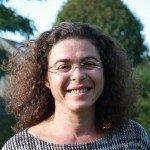Link to Pubmed [PMID] – 15184551
Link to DOI – 10.1099/mic.0.27017-0
Microbiology (Reading, Engl.) 2004 Jun; 150(Pt 6): 1649-1659
Clostridium perfringens, a strictly anaerobic bacterium, is able to survive when exposed to oxygen for short periods of time and exhibits a complex adaptive response to reactive oxygen species, both under aerobic and anaerobic conditions. However, this adaptive response is not completely understood. C. perfringens possesses specialized genes that might be involved in this adaptive process, such as those encoding superoxide dismutase (SOD), superoxide reductase and alkyl hydroperoxide reductase, but their contribution to the oxidative stress response and their control mechanisms are unknown. By a combination of functional complementation of Escherichia coli strains impaired in either SOD, alkyl hydroperoxide reductase (AhpC) or catalase activity (Cat), transcription analysis and characterization of mutants impaired in regulatory genes, it was concluded that: (i) the product of the sod gene is certainly essential to scavenge superoxide radicals, (ii) the ahpC gene, which is fully induced in all oxidative stress conditions, is probably involved in the scavenging of all intracellular peroxides, (iii) the three rubrerythrin (rbr) genes of C. perfringens do not encode proteins with in vivo H(2)O(2) reductase activity, and (iv) the two rubredoxin (rub) genes do not contribute to the hypothetical superoxide reductase activity, but are likely to belong to an electron transfer chain involved in energy metabolism.

